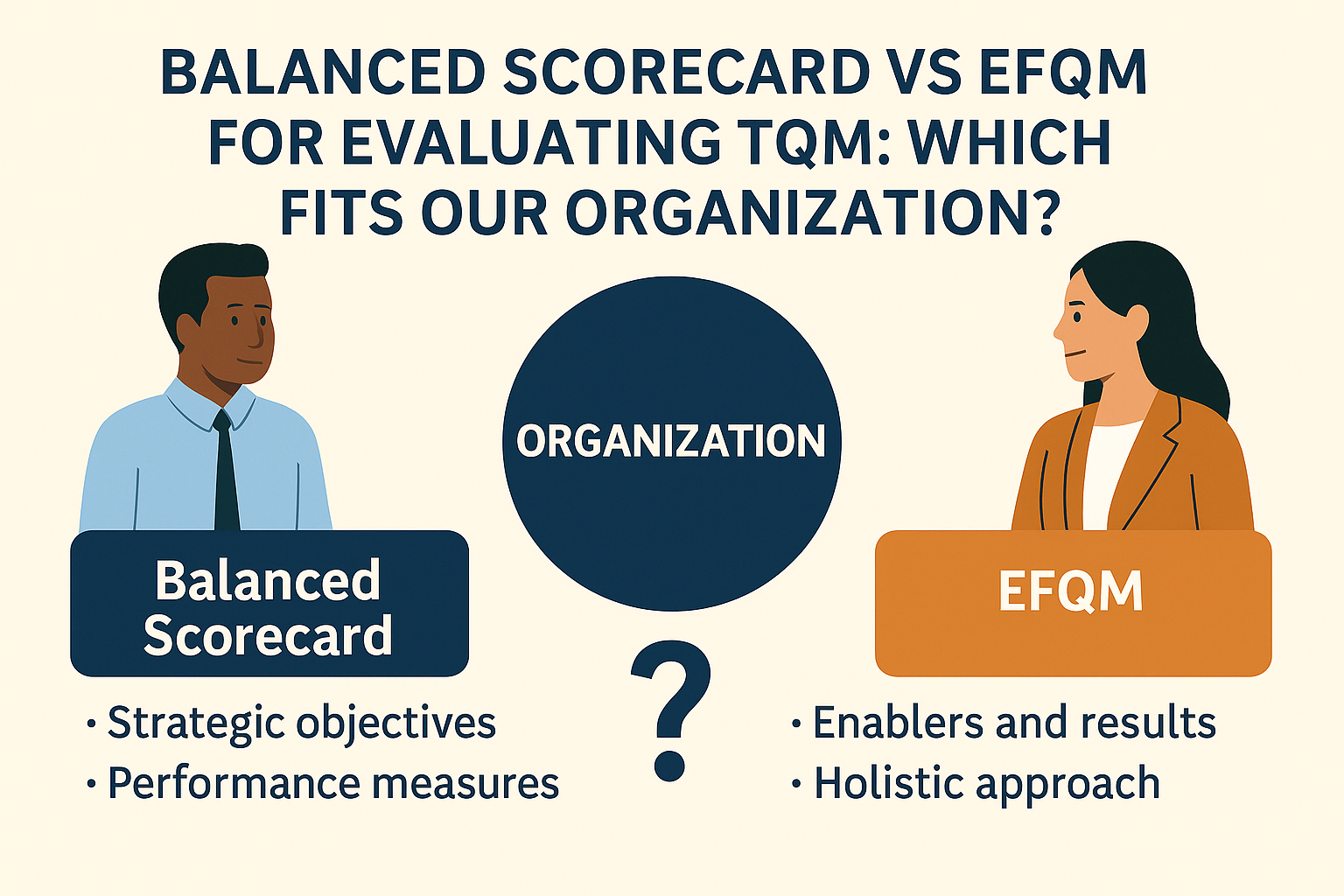- Home
- Continuous Improvement Certification Online
- Balanced Scorecard Vs Efqm
Balanced Scorecard vs EFQM for evaluating TQM: which fits our organization?
Balanced Scorecard (BSC) and EFQM both evaluate TQM, but they serve different needs. BSC is a strategy‑execution system: set objectives and KPIs across Financial, Customer, Internal Process, and Learning & Growth; align projects and budgets to move those needles. EFQM is a holistic excellence model: score Enablers (leadership, strategy, people, partnerships, processes) and Results (customer, people, society, business) to diagnose maturity and gaps. Choose BSC when strategy clarity and KPI alignment are the pain points; choose EFQM when you need a comprehensive maturity assessment and peer benchmarking. Many organizations use both: EFQM to find systemic gaps, BSC to execute a focused portfolio that closes them. Start small: one pilot scorecard and one EFQM self‑assessment before scaling.

Balanced Scorecard (BSC) and EFQM both help
you evaluate Total Quality Management, but they answer different questions.
Balanced Scorecard (BSC): A strategy execution system. It translates strategy
into objectives, measures, targets, and initiatives across four
perspectives—Financial, Customer, Internal Process, and Learning & Growth.
BSC shines when organizations struggle to align projects, budgets, and
day‑to‑day work to strategic goals. Its strength is clarity and governance:
choose a few KPIs per perspective and review them monthly at leadership
cadence.
EFQM Excellence Model: A holistic assessment of organizational excellence. It
evaluates Enablers (leadership, strategy, people, partnerships & resources,
processes) and Results (customer, people, society, business). EFQM provides a
maturity score, evidence‑based feedback, and benchmarking against peers. It’s
ideal when you need a wide‑angle diagnosis of culture, systems, and results—not
just KPI movement.
Which fits? Choose BSC if your pain is strategy clarity, KPI alignment, and
execution discipline. Choose EFQM if you need a comprehensive maturity
assessment, a roadmap of systemic gaps, and external benchmarking. Many
organizations combine them: run an EFQM self‑assessment annually to surface
gaps, then use BSC to select and manage the projects that close those gaps.
Start with a pilot: one scorecard, one EFQM self‑assessment, then scale based
on learning.
Back to Evaluation of TQM.
Suggested links: